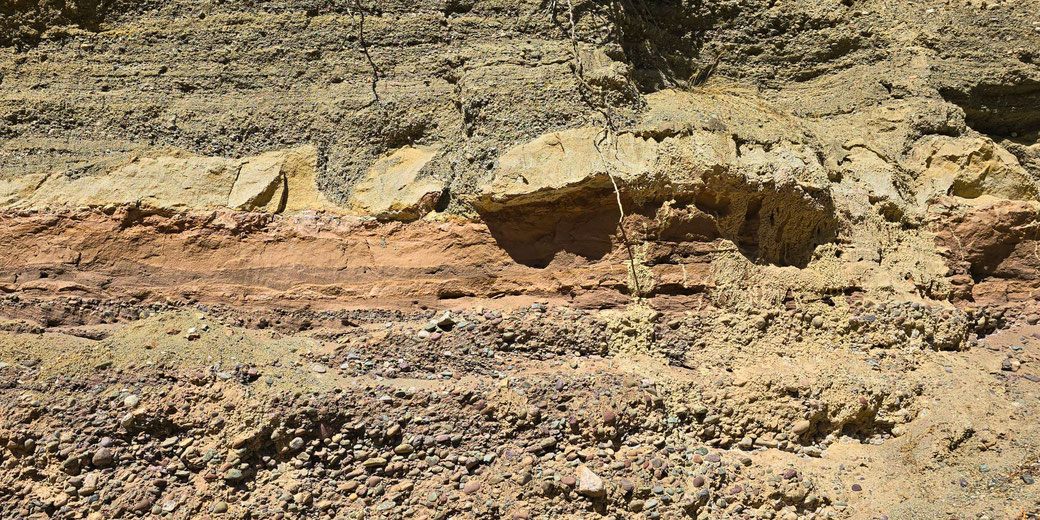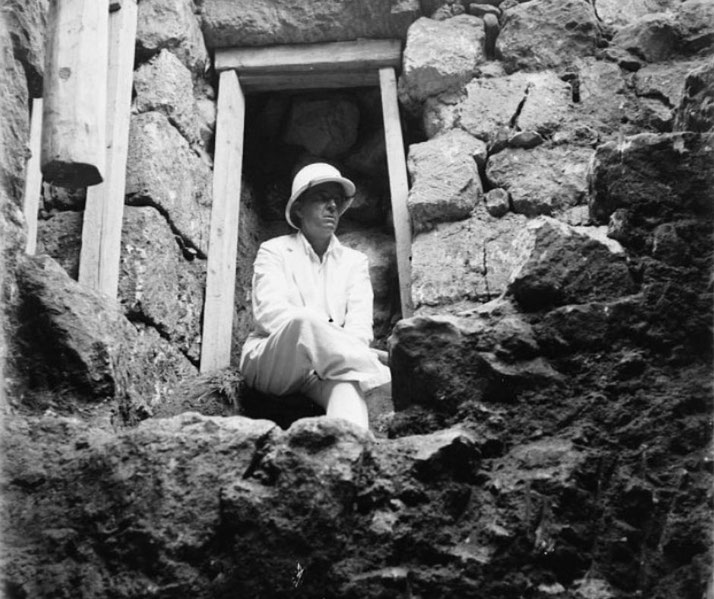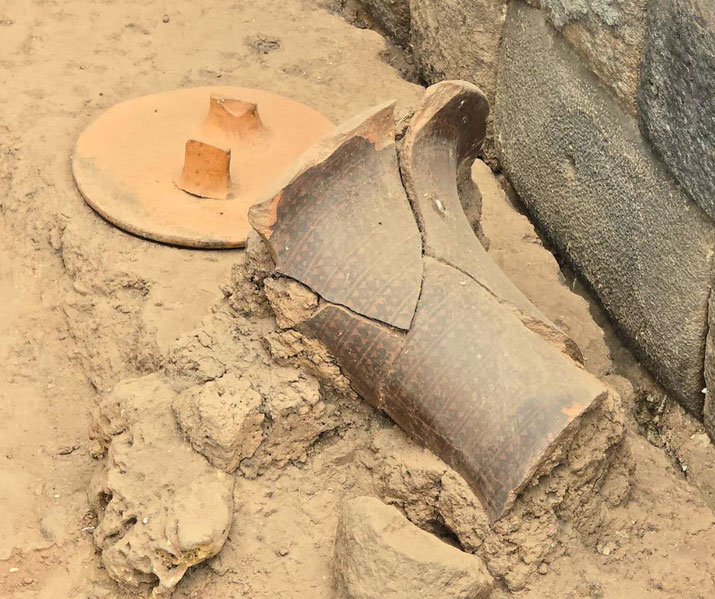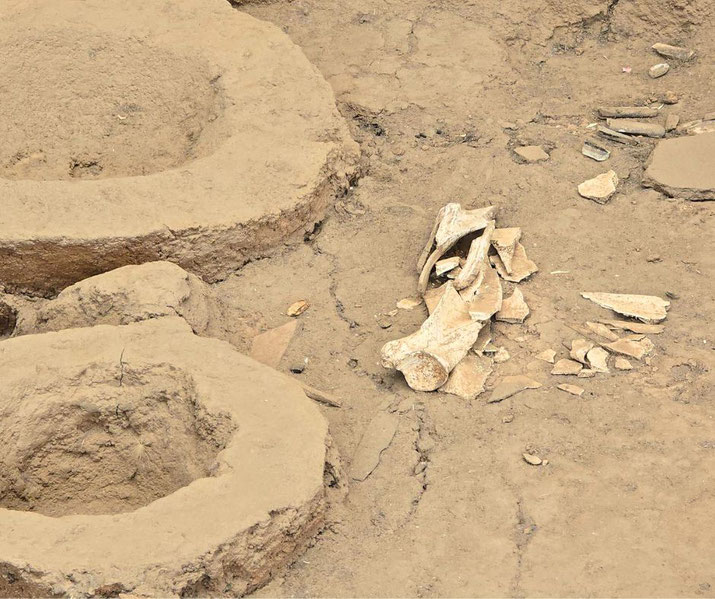What is relative dating in archaeology?

Archaeology, as a science, is the study of human history and prehistory through the excavation and analysis of material remains.
When archaeologists discover a new site and begin unearthing ancient artefacts, one of the first questions they want to answer is: how old is it?
To discover the age of individual items, archaeologists use a variety of methods to establish timelines and uncover human history.
However, in the early years of archaeology, they did not have access to the details scientific equipment that we have today.
So, they had to quickly develop techniques that helped them determine approximate dates based upon the information they uncovered on site.
What is 'relative dating'?
The two different categories of dating techniques that archaeologists used are called relative dating and absolute dating.
Here, we will explain how relative dating works, while we deal with absolute dating in a separate article.
Relative dating is a method that determines the chronological sequence of events or objects.
Rather than providing an exact age, it establishes if one event or object predates another.
This is achieved by analyzing various aspects and characteristics of the archaeological material.
Absolute dating, in contrast, provides an estimate of the actual age or date of an object or event.
Methods such as radiocarbon dating and dendrochronology (tree-ring dating) are used in this process.
These techniques tend to be more time-consuming and costly than relative dating methods, yet they provide more precise dates.

Stratigraphy
One of the first absolute dating techniques created is called stratigraphy. This involves studying layers of sedimentary rock or soil, which is surprisingly helpful in determining an artefact's age.
Since soil layers are created over long periods of time, human-made objects often are left on the ground and are slowly covered in dirt.
As time passes, the different layers of soil have distinct colours. Therefore, when archaeologists, cut down into the ground, they can visually see the different layers of dirt that have built up over the centuries.
If objects are found within specific layers, it can provide insights into their age, in comparison to the layers of soil above or below where the object was found.
As a result, archaeologists use the 'law of superposition', which states that the oldest layer of soil is always at the bottom of site, while the youngest layer is at the top.
For example, if you were looking at a cliff face, you could see various layers of sedimentary rock that had slightly different colours.
The oldest layer of dirt would be at the very bottom and the youngest layer would be at the top, closest to the modern ground-level.
When archaeologists developed this relative dating technique, it helped them to know that when two items were found in different layers, they knew that the one found deeper in the soil would have to be older than the one found above it.
One notable example of stratigraphy is the excavation of the ancient city of Troy by Heinrich Schliemann in the late 19th century, where distinct layers revealed different periods of habitation over many centuries.
Cross-dating
As a result of the success of stratigraphy, a second relative dating technique was developed as well.
This was called 'cross-dating'. This one still uses the information provided by stratigraphy, but it involves comparing the different soil layers of sites in a similar geographical area.
If two sites share the same strata sequence, they are likely to be roughly contemporaneous: they would have soil layers of the same age.
This method proves particularly useful when there are only a few material remains at an archaeological site.
Cross-dating was crucial in establishing the chronology of the Ancestral Puebloans in the American Southwest, where similar pottery styles across different sites indicated cultures that lived at roughly the same time.
Typology
Another important relative dating technique is known as 'typology'. This is a system that classifies ancient objects according to their physical characteristics and design type.
For example, an archaeologist might find two pottery jars on the same site, but have very different designs.
By looking at the 'type' of it design, you can often determine when it was made.
When archeologists do this, they often find that certain shapes of pot were popular in a civilisation at the same time.
Therefore, in a particular soil layer, they could find hundreds of pots of the same shape and design pattern.
However, at a different soil layer which was from a hundred years later, the pottery shapes and designs has changed.
Therefore, just by recording the popularity of particular types and patterns at a site, they could compare any single pottery with their records to determine when it was made.
Since this relative dating technique became very helpful in dating pottery, since every ancient culture developed their own distinctive styles, a particular kind of typology, known as 'ceramic typology' is often used for dating archaeological sites.
As such, this method is useful to date any ceramic objects, such as pots or vases.

Fluorine dating
Fluorine dating is a more recent relative dating technique that is used specifically for dating bones and teeth.
This method measures the concentration of fluorine in bone, which is absorbed from the surrounding soil into animal bones and teeth over time.
As a result, this is most helpful when animal or human bones have been in contact with dirt over many centuries, such in the cases of a burial.
A higher concentration of fluorine in a bone suggests that it has been in the soil for a longer time, and therefore, is of an older age.
However, as fluorine absorption rates can vary based on local environmental conditions, fluorine dating is used more to compare relative ages of bones from the same site rather than determining an exact age.
Nevertheless, fluorine dating played a key role in dating the bones found at Zhoukoudian, the site of the Peking Man, by comparing fluorine content with other bone artefacts from the site.

The famous case of the Piltdown Man hoax
To demonstrate how useful these relative dating techniques can be in determining the age of ancient artefacts, people often cite the notorious Piltdown Man case.
The Piltdown Man was a historical artefact that was presented to the scientific community in the early 1900s and claimed to be evidence of a lost stage in human evolution.
Discovered in the ground at the site of Piltdown, the artefact was a skull that appeared to be half-human and half-ape.
At the time of its 'discovery', it was promoted as the only evidence of the 'missing link' between modern humans and prehistoric apes, which occurred tens of thousands of years in the past.
At the time of its initial 'find', it was hard for archaeologists to prove whether this skull was genuine or not.
However, when fluorine dating was developed in the mid-20th century, the story began to unravel.
In1953, it was concluded that the parts of the skull almost no significant traces of fluorine in it at all, which indicated that it had almost no long-term contact with soil.
Therefore, it could not have been in the ground for the tens of thousands of years it needed to have been to be the age it was claimed.
Later absolute dating techniques and DNA studies later confirmed that it had been tampered with.
In fact, it was a combination of a modern orangutang skull that had been discoloured to make it look much older than it actually was, combined with bone from an anatomically modern human.
Famous discoveries
Aside from this, there are many important archaeological discoveries that have used relative dating methods.
One of the most famous is the Dead Sea Scrolls, which were found in caves near the Dead Sea in 1947.
The scrolls were dated using a variety of methods, including radiocarbon dating and stratigraphy.
Another famous discovery is the Tomb of Tutankhamun, which was discovered in 1922 by Howard Carter.
The age of the tomb was determined through the use of ceramic typology and fluorine dating, as well as cross-referencing them with context and inscriptions.
Also, the excavation of the Neolithic settlement of Çatalhöyük in Turkey, led by James Mellaart in the 1960s, relied upon stratigraphy to uncover multiple layers of human occupation dating back to 7500 BC.
Summary
Relative dating methods are crucial tools in archaeology, allowing for the chronological ordering of artifacts and archaeological features.
While they may not always yield precise dates, they do offer a broad timeframe that helps archaeologists reconstruct the past.
It's also important to note that dating methods are influenced by a variety of factors such as the context in which an object was found and the prevailing environmental conditions.
Therefore, it's common for multiple dating techniques to be used in conjunction to confirm findings.
Further reading
What do you need help with?
Download ready-to-use digital learning resources
Copyright © History Skills 2014-2025.
Contact via email
With the exception of links to external sites, some historical sources and extracts from specific publications, all content on this website is copyrighted by History Skills. This content may not be copied, republished or redistributed without written permission from the website creator. Please use the Contact page to obtain relevant permission.





